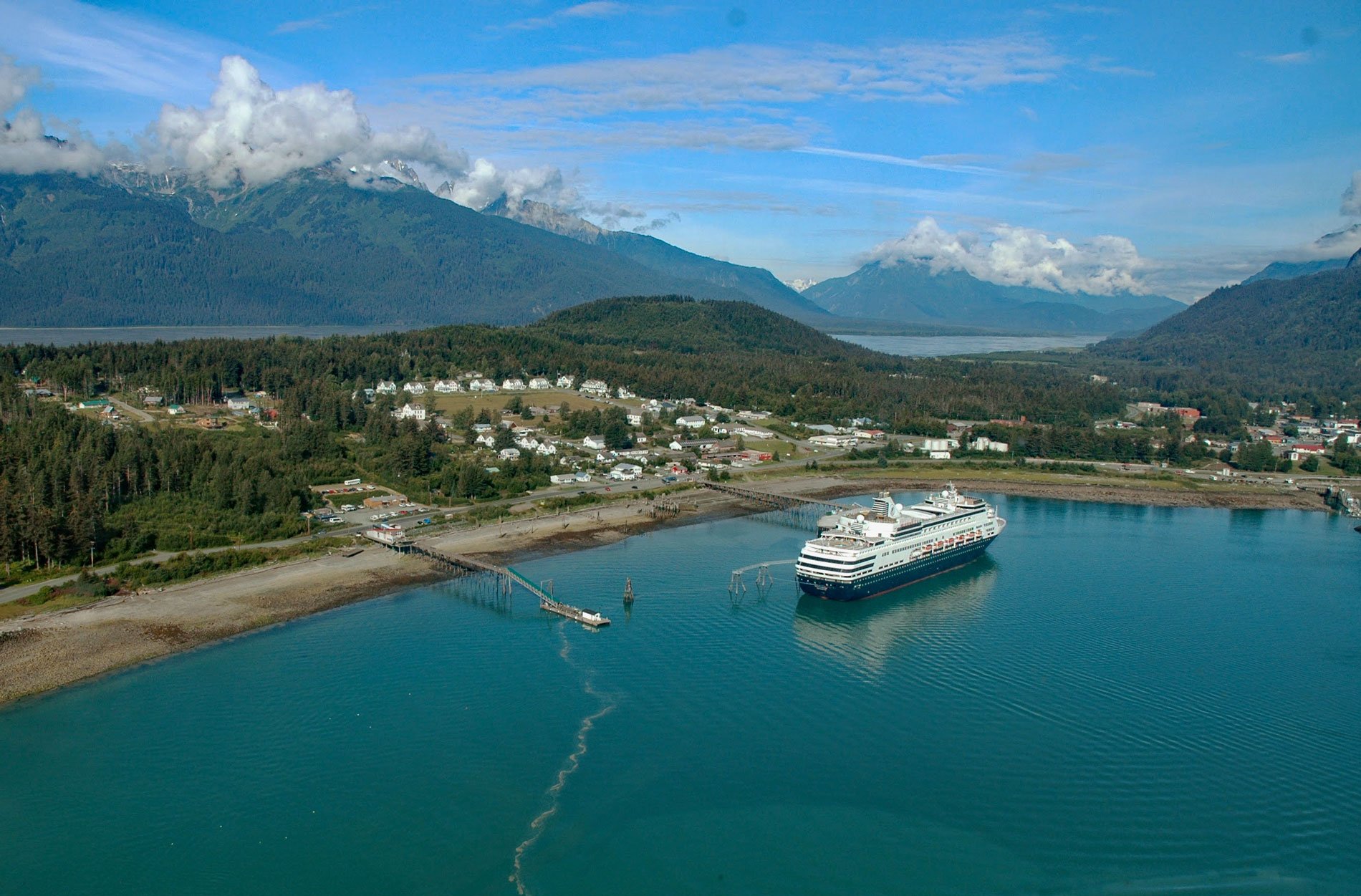Haines is a small Southeast Alaska community on the Chilkat Peninsula at the north end of Lynn Canal between Chilkat Inlet and Chilkoot Inlet, about 75 miles (121 km) north-northwest of Juneau and 15.5 miles (25 km) south-southwest of Skagway, Alaska. The area was called “Dtehshuh” or “Deishú” meaning “end of the trail” by the Chilkat Tlingit that used a portage trail instead of paddling 24 miles (39 km) around the south tip of the Chilkat Peninsula. The Chilkat’s were well known as a large and powerful Tlingit tribe. They had exclusive control of many trade routes into the interior through which they maintained their position as middlemen in the fur trade and amassed great wealth. The Chilkat’s had several clans and many village sites along the Chilkat and Chilkoot Rivers but today only Klukwan remains occupied.
The first Europeans to visit were Captain George Vancouver‘s expedition in July 1794, who sent Lieutenant Joseph Whidbey and a small exploration party up Lynn Canal to Chilkat Inlet. Lynn Canal was subsequently named for Vancouver’s birthplace at King’s Lynn, Norfolk, England. During the following decades, explorers and traders became more frequent visitors, most notably, Captain Richard Jeffrey Cleveland sailed the American cutter Caroline to the end of Taiya Inlet in 1799, and John D’Wolf’s trading excursion in 1805 on the American brig Juno. In 1869, William Henry Seward, his son Frederick and surveyor George Davidson with the U.S. Coast Survey visited Klukwan to view a total eclipse. In 1879, George Dickinson started a trading post for the Northwest Trading Company. In 1881, Samuel Hall Young who was a Presbyterian missionary from Fort Wrangell was given permission by the Chilkat to build a mission school for the Native children. By 1881, with the financial help from Sheldon Jackson, the mission school was established on land given to the church by the Chilkat along the narrow portage trail between the Chilkat River and Lynn Canal. In 1884, the mission was renamed “Haines” in honor of Francina E. Haines, the chairwoman of the committee that raised funds for its construction.
In 1880, a group of miners including John Lemon and led by Edmund Bean was allowed into the interior with permission of the Chilkat, and soon more pressure was brought to bear on the Chilkat to open trade access to the interior. During the 1890s, their income derived from trade was shrinking as others began to haul freight over the passes. In 1898, the discovery of gold in the Porcupine gold placer district triggered action to resolve the boundary dispute between Alaska and Canada, and Skagway was garrisoned with U.S. federal troops. From 1898 to 1899, the Klondike Gold Rush began to significantly change the region. Haines became a supply center for the Dalton Trail from Chilkat Inlet to the interior that offered an alternative route to the Yukon for prospectors. In 1903, construction was begun on a permanent military post near Haines that was garrisoned in 1904 and named Fort William H. Seward, in honor of the Secretary of State who negotiated the Alaska Purchase from Russia in 1867. By 1909, the installation had grown to cover more than 4,000 acres (1,600 ha) with 85 wood-framed buildings. It provided a policing presence for gold miners, and a military presence during negotiations over the nearby Alaska border dispute with Canada. Today, Haines is the end of the Haines Highway that starts at Haines Junction on the Alaska Highway and is a popular route for travelers from Southcentral Alaska connecting to the Alaska Marine Highway terminal. Read more here and here. Explore more of Haines and Chilkoot Inlet here:

